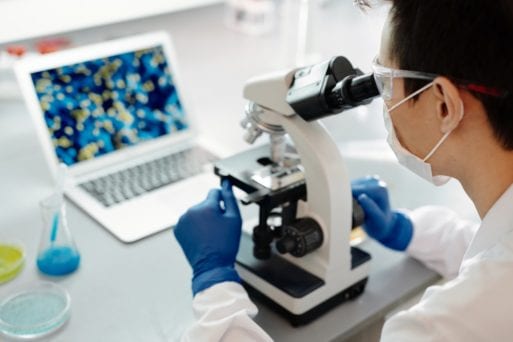
Credit: Edward Jenner
As anyone who’s watched the popular CBS TV series Crime Scene Investigation can tell you, forensic pathologists have long relied on tried-and-true methods to identify the time of death for a newly discovered body. Yet these approaches are limited, often forcing investigators to depend on estimates. Fortunately, scientists around the globe have been developing new and more accurate means to determine time of death that could revolutionize our understanding of what’s happened to victims of crime, accidents and other ambiguous circumstances.
Examiners rely on various means to fix time of death, including post-mortem changes to eyes and skin; algor mortis, or the cooling of the body; rigor mortis, or muscle stiffening; livor mortis, or skin discoloration; and blood and skin analysis, among others. One common approach is Henssge’s nomogram, which involves taking a rectal temperature of the body at the scene and combining it with ambient temperature and body weight to determine time of death.
But some, including Maurice Aalders, a professor of Forensic Biophysics at the University of Amsterdam’s Academic Medical Center, find Hennsge’s approach faulty, as it fails to factor in variables such as whether the person was thin or heavy. “This implies that the results are not that reliable,” Aalders said in an article authored by the University of Amsterdam on Phys.org. Aalders added that the invasive nature of Henssge’s nomogram could also disturb the gathering of evidence.
In May, Aalders joined other researchers at the University of Amsterdam and the Netherlands Forensic Institute to publish a paper detailing a novel approach to determining time of death in the journal Science Advances. The computational method takes various measurements of a corpse’s temperature using thermal cameras or sensors and makes adaptations for body type, clothes coverage and other variables. It was found accurate within an average of 38 minutes from the exact time of death for four humans that had died between five to 50 hours prior, the paper said. Researchers are now exploring capturing a 3D image to further analyze posture, body type and other factors, Aalders added in the Phys.org article.
Advances to Fix Time of Death for Submerged Bodies

Credit: Neemias Seara
Meanwhile, researchers in the U.K. have identified a possible biomarker to determine the time of death for corpses that have been submerged in water. Such circumstances can be particularly challenging, as variables such as salinity, temperature, tides and bacteria can affect the decomposition process.
But the team at Northumbria University in Newcastle studied mice that had been submerged in tap water, chlorinated water, salt water and pond water and found that the proteins in their bones changed more based on the length of time submerged than on the type of water. The findings — the first to bring proteomics, or the study of proteins, in bones into aquatic forensic science — were published in the Journal of Proteome Research in April.
Co-author Noemi Procopio recently told Ars Technica that the researchers hope to next explore the effects of temperature and other variables on time of death and to eventually move on to human bodies.

 Scientists Uncover New Ways to Determine Time of Death
Scientists Uncover New Ways to Determine Time of Death


 “Songbird” by Fleetwood Mac
“Songbird” by Fleetwood Mac
 First the Wealth Gap, Now the U.S. Has a Growing Health Gap
First the Wealth Gap, Now the U.S. Has a Growing Health Gap
 How to Comfort A Dying Loved One
How to Comfort A Dying Loved One














